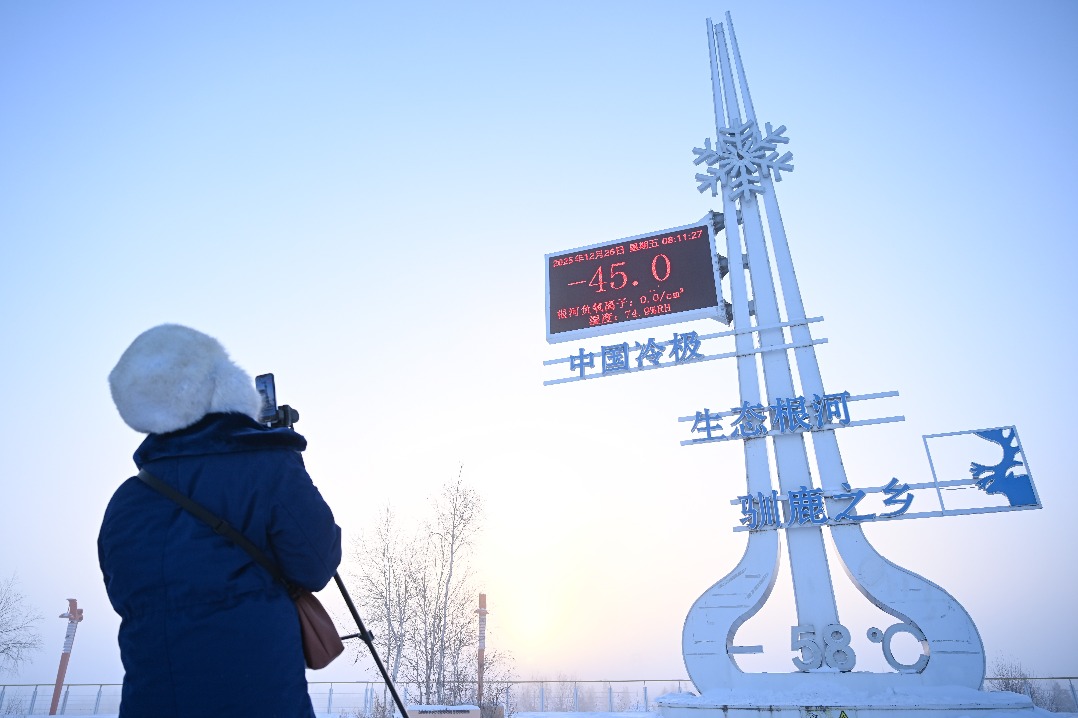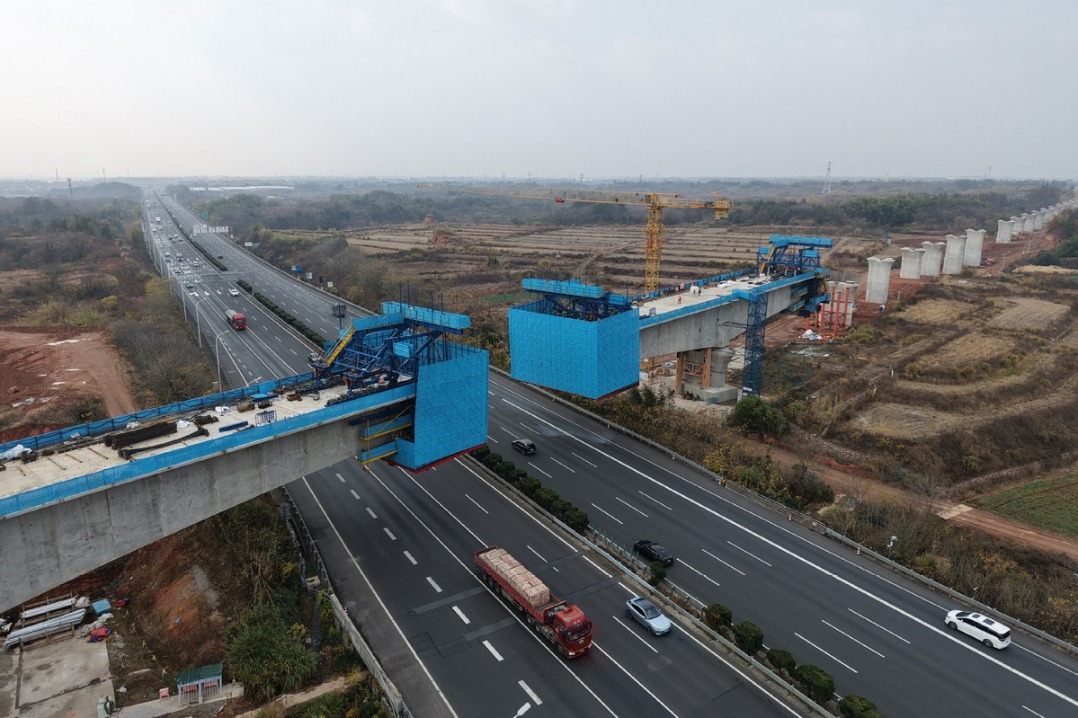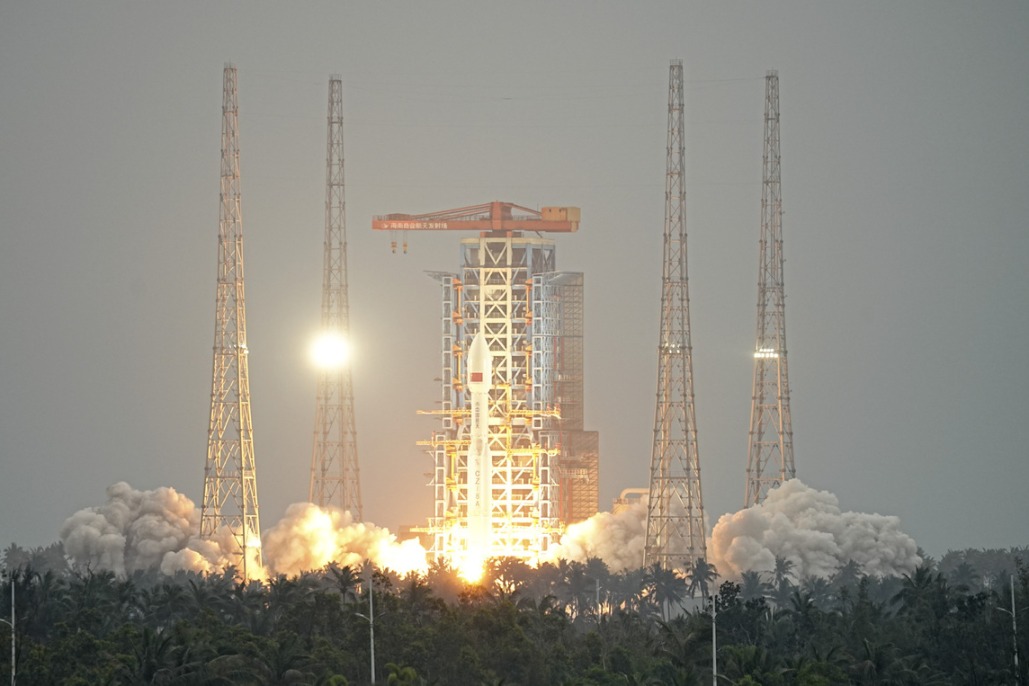Crystallized dinosaur egg fossils unearthed in Hubei


Researchers in Shiyan, Hubei province, recently found three crystallized dinosaur egg fossils during preservation work on a previously unearthed nest at the Qinglong Mountain National Nature Reserve for Dinosaur Egg Fossils.
The crystallized eggs were found in July and identified in December among 31 fossilized eggs that were being maintained.
The process of crystallization occurs over a period of thousands or even millions of years.
"It is the first time that crystallized dinosaur egg fossils have been found in Hubei, and it is of significant research value in revealing how dinosaurs laid eggs, and in reconstructing the ancient environment," said Zhao Bi, director of the paleontological fossil research center at the Hubei Institute of Geosciences.
The dinosaur egg fossil site in Shiyan's Yunyang district dates to approximately 60 to 80 million years ago, and was discovered in 1995. It is the world's largest dinosaur egg fossil site.
In 2020, the Chinese Yunyang Dinosaur Egg Research Center was established at the site by the Institute of Vertebrate Paleontology and Paleoanthropology of the Chinese Academy of Sciences and the Hubei Institute of Geosciences.
Through years of extensive and meticulous research, experts have confirmed that the dinosaur eggs found in the region were likely produced in the mid-Cretaceous period.
So far, nearly 3,000 well-preserved dinosaur egg fossils have been excavated and protected, which can be identified and classified into at least 220 nests with unique arrangements.
The three recently discovered crystallized dinosaur egg fossils were flattened ovoids with a long axis of about 14 to 15 centimeters, a short axis of about 12 cm, and a shell thickness ranging from 1.31 to 2.4 cm.
They were all found in their original buried state.
"All three fossils have a relatively high level of preservation and the eggshells and internal crystalline minerals are mostly well-preserved," said Zhao. "Only some small areas on the surface of the eggs show localized cracks, revealing internal mineral crystallization. That is completely different from the other surrounding dinosaur egg fossils."
Observing from the most typical fossil, labeled as J2, experts found that the crystals near the eggshell were densely packed, while those in the central part of the egg were larger and exhibited single-crystal structures, which indicates that the crystallization process occurred from the outside to the inside.
"The current scientific research on the formation of crystallized dinosaur egg fossils is relatively weak, and no relevant theories have been established across the world," said Zhao. "Based on the preliminary observations of the intact morphology of the eggshells, we inferred that they should be unhatched or unbroken dinosaur eggs.
"The internal calcite minerals are likely the result of a large amount of supersaturated calcium carbonate solution infiltrating through the eggshell pores, leading to crystallization and filling."
Among the 31 dinosaur egg fossils in the nest, more than 20 had surface cracks and internal sediment fillings, indicating that the majority of the eggs had hatched.
"The three crystallized dinosaur egg fossils were located on the same side of the nest, which may indicate a certain uniqueness in the microenvironment of the location," said Zhao. "The three dinosaur eggs might have been close to a water channel and have been submerged shortly after being laid due to rising water levels."
It is worth noting that crystallized dinosaur egg fossils are extremely rare worldwide because the formation environment and conditions for them are very demanding compared to ordinary dinosaur egg fossils.
"Some crystallized dinosaur egg fossils can be only occasionally seen in large exhibitions and museums, attracting attention from various fields," said Zhao.
"However, these fossilized eggs have become specimens without important buried information after being removed from their original sites and geological layers.
"The fossils discovered in Qinglong Mountain are still in their original burial and protected states, together with other dinosaur egg fossils," he said.
"The formation of crystallized dinosaur egg fossils occurred in a unique paleoenvironment, preserving valuable geochemical information about dinosaur egg laying and hatching periods, as well as information about the microenvironmental characteristics of the nests."
- CPC leadership meeting urges steadfast implementation of eight-point decision on improving conduct
- Ethiopian coffee trading center unveiled in Zhuzhou
- Mouse births pups after space mission, paving way for future research
- Autumn grain purchases exceed 200m tons in China
- Public chooses names for China's space-traveled mice
- Xinjiang's outside investment hits 1t yuan mark





































